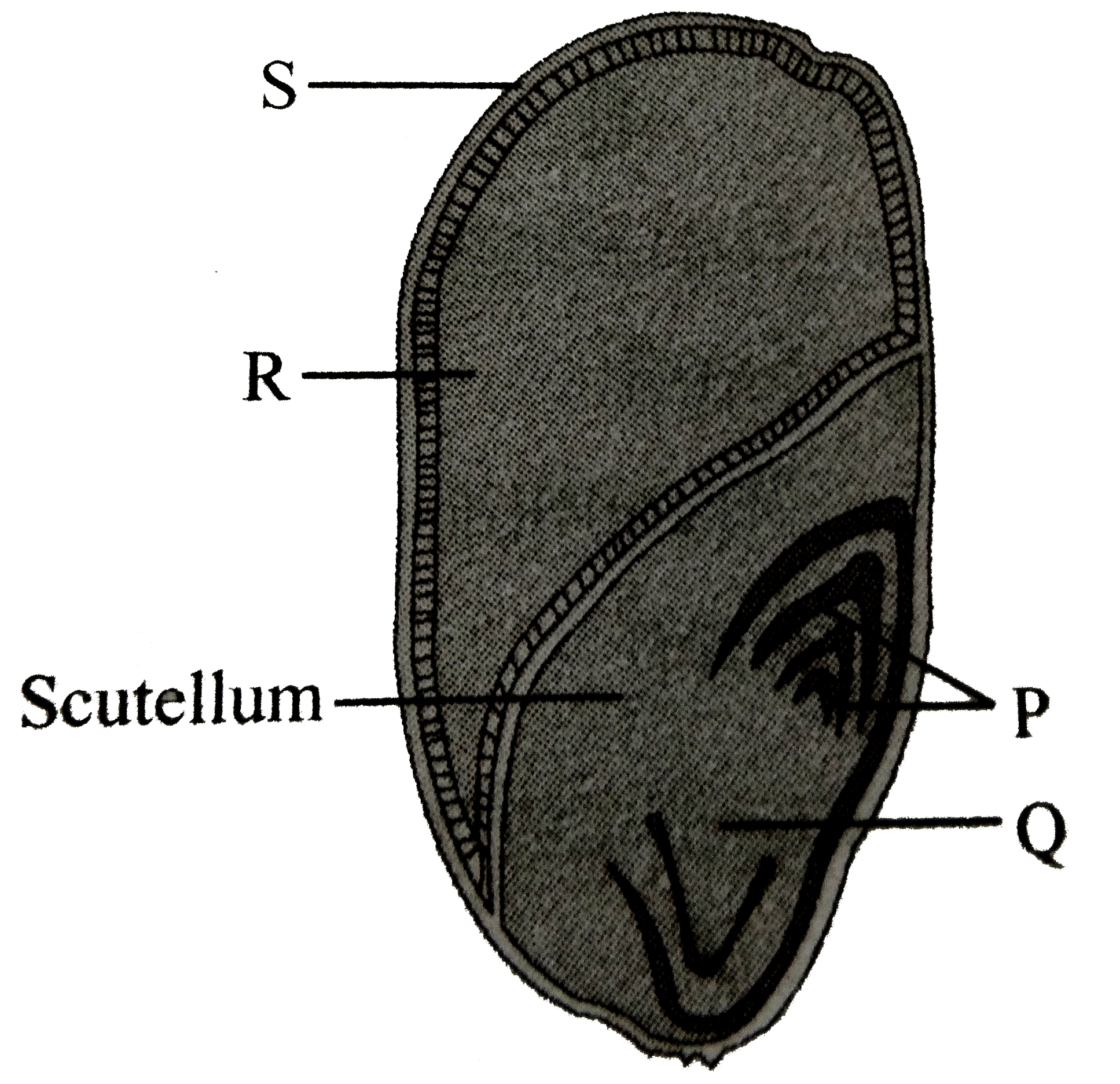Coleoptile and coleorhize in monocot embryo :
are extensions of scutellum
are foliar structures
are extensions of plumule and radicle
secrete hydrolytic enzmes
The correct Answer is:1
Step-by-Step Solution:
1. Understanding the Terms:
- Coleoptile: This is a protective sheath that covers the emerging shoot (plumule) in monocot seeds.
- Coleorhiza: This is a protective sheath that covers the radicle (embryonic root) in monocot seeds.
2. Identifying Their Functions:
- The coleoptile serves to protect the plumule as it grows upwards towards the light.
- The coleorhiza protects the radicle as it grows downwards into the soil.
3. Relation to Scutellum:
- The scutellum is the single cotyledon found in monocots, such as grasses.
- Both coleoptile and coleorhiza are extensions of the scutellum, which means they develop from it.
4. Analyzing the Options:
- The options provided include:
- Extensions of scutellum
- Foliar structures
- Extensions of plumule and radical
- Secrete hydrolytic enzymes
- The correct option is "are extensions of scutellum" since both coleoptile and coleorhiza derive from the scutellum.
5. Conclusion:
- Therefore, the correct answer to the question regarding coleoptile and coleorhiza in monocot embryos is that they are extensions of the scutellum.
- Coleoptile: This is a protective sheath that covers the emerging shoot (plumule) in monocot seeds.
- Coleorhiza: This is a protective sheath that covers the radicle (embryonic root) in monocot seeds.
- The coleoptile serves to protect the plumule as it grows upwards towards the light.
- The coleorhiza protects the radicle as it grows downwards into the soil.
- The scutellum is the single cotyledon found in monocots, such as grasses.
- Both coleoptile and coleorhiza are extensions of the scutellum, which means they develop from it.
- The options provided include:
- Extensions of scutellum
- Foliar structures
- Extensions of plumule and radical
- Secrete hydrolytic enzymes
- The correct option is "are extensions of scutellum" since both coleoptile and coleorhiza derive from the scutellum.
- Therefore, the correct answer to the question regarding coleoptile and coleorhiza in monocot embryos is that they are extensions of the scutellum.
Topper's Solved these Questions
- SEXUAL REPRODUCTION IN FLOWERING PLANTSBOOK - VMC MODULES ENGLISHCHAPTER - SEXUAL REPRODUCTION IN FLOWERING PLANTSEXERCISE - IMPECCABLE
60 Videos
- SEXUAL REPRODUCTION IN FLOWERING PLANTSBOOK - VMC MODULES ENGLISHCHAPTER - SEXUAL REPRODUCTION IN FLOWERING PLANTSEXERCISE - ENABLE
50 Videos
- REPRODUCTIVE HEALTHBOOK - VMC MODULES ENGLISHCHAPTER - REPRODUCTIVE HEALTHEXERCISE - Chapter Exercise-C
10 Videos
- STRATEGIES FOR ENHANCEMENT IN FOOD PRODUCTIONBOOK - VMC MODULES ENGLISHCHAPTER - STRATEGIES FOR ENHANCEMENT IN FOOD PRODUCTIONEXERCISE - IMPECCABLE
30 Videos
Similar Questions
in monocots
View SolutionColeoptile is
View SolutionIn monocot leaf
View SolutionIn a monocot root
View SolutionColeoptile and coleorhiza are protective coverings in Maize grain. Which is true ?
View SolutionColeoptile and coleorhiza are the protective sheats covering labelled part_____and_____respectively.

View SolutionStele in a monocot stem
View Solutionmonocot stem has
View SolutionDicots and monocots are two classes under the divison- angiosperms. Which of the following statements are correct about their seeds?
i. The scutellum is cotyledon in dicots.
ii. Generally, dicots have non-endospermic seeds.
iii. Coleoptile covers the plumule in monocots.
iv. The heart-shaped embryo is seen in monocots.
View SolutionThe single cotyledon in monocots is
View Solution
